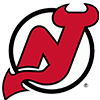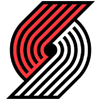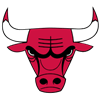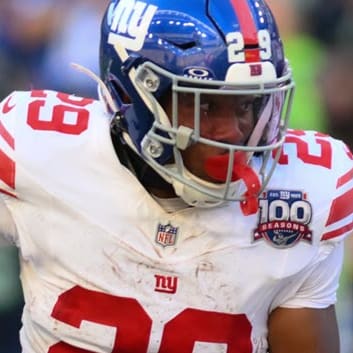Cook suffered another shoulder injury in Week 3 and could miss time. The Vikings running back has had recurring shoulder problems since high school, including multiple dislocations and surgeries.
The shoulder is made up of multiple articulations, including the sternoclavicular (SC) joint, the acromioclavicular (AC) joint, and the glenohumeral (GH) joint. The GH joint is the ball-and-socket joint of the shoulder and the joint most associated with the shoulder. The ball-and-socket configuration allows the joint to be super mobile but at the cost of stability.
Imagine a golf ball on a tee. The surface area of the tee is big enough to allow the ball to freely move but small enough that even the slightest force can knock it off its perch. In the GH joint, the head of the humerus is comparable to golf ball while a groove of the shoulder blade acts as the tee. Muscles, ligaments and a cartilage rim known as the labrum help fortify the joint to ensure the ball remains on the tee. However, if enough force is applied to the joint, the supportive structures can fail, moving the ball (humerus) off the tee (shoulder blade).
If the disruption is temporary and the stabilizing structures return the ball to the tee, the injury is called a subluxation or partial dislocation. A true dislocation occurs when the displacement of the joint is complete. These injuries often require outside assistance to return the joint to its normal alignment.
The primary concern following either injury is
Cook suffered another shoulder injury in Week 3 and could miss time. The Vikings running back has had recurring shoulder problems since high school, including multiple dislocations and surgeries.
The shoulder is made up of multiple articulations, including the sternoclavicular (SC) joint, the acromioclavicular (AC) joint, and the glenohumeral (GH) joint. The GH joint is the ball-and-socket joint of the shoulder and the joint most associated with the shoulder. The ball-and-socket configuration allows the joint to be super mobile but at the cost of stability.
Imagine a golf ball on a tee. The surface area of the tee is big enough to allow the ball to freely move but small enough that even the slightest force can knock it off its perch. In the GH joint, the head of the humerus is comparable to golf ball while a groove of the shoulder blade acts as the tee. Muscles, ligaments and a cartilage rim known as the labrum help fortify the joint to ensure the ball remains on the tee. However, if enough force is applied to the joint, the supportive structures can fail, moving the ball (humerus) off the tee (shoulder blade).
If the disruption is temporary and the stabilizing structures return the ball to the tee, the injury is called a subluxation or partial dislocation. A true dislocation occurs when the displacement of the joint is complete. These injuries often require outside assistance to return the joint to its normal alignment.
The primary concern following either injury is the associated amount of damage sustained by the surrounding structures, including the muscles, ligaments or labrum. Once damaged, the integrity of the joint is compromised, future subluxations or dislocations are more likely to occur. To mitigate this risk, surgery can be performed to repair the labrum (or any associated damage) and/or rehab can be performed to help strengthen the muscles and offset some of the instability.
While Cook's injury is being classified as a subluxation, his case is complicated by his injury history. He has undergone labrum repairs on both shoulders at various points of his playing career and even that has not solved the problem. He dislocated his left shoulder last season and re-injured his labrum again. Cook did not undergo surgery for that specific injury, meaning he will be at high risk for a future subluxations or dislocations. The team has said he will wear a harness, but that isn't a guarantee that he won't suffer another injury. As a result, the chances of him missing time at some point will linger, and investing in suitable backup, perhaps Minnesota teammate Alexander Mattison, is highly suggested.
Turf Burns
Julio Jones: The Buccaneers wideout did not play in Tampa Bay's loss to Green Bay. The injury is a Grade 2 (partial tear) of the posterior cruciate ligament (PCL) in his knee. I discussed PCL sprains last week with Dalton Schultz, and now Jones is nursing the same injury. He appears on track to return in Week 4, but expectations should be lowered for the veteran receiver.
Mac Jones: The Patriots quarterback suffered a high ankle sprain in the team's Week 3 loss to the Ravens. A high ankle sprain is often more problematic than a "normal" ankle sprain and involves a different joint altogether. In high ankle sprains, the connective tissue between the two lower leg bones is compromised, often creating a widening in the area. As a result, they often take more time to adequately heal, and surgery may be necessary if the disruption is significant. Jones' sprain is being described as "severe" and he is seeking multiple opinions before deciding on a treatment plan. The team is hopeful he can avoid surgery, though it has not been officially ruled out. At this point a multi-week absence should be expected, and an IL designation seems plausible. Veteran quarterback Brian Hoyer would start for New England if Jones were unable to play.
David Montgomery: The Bears running back limped off the field on Sunday with knee and ankle injuries. The injuries occurred when Montgomery was rolled up on while blocking. Often when a player's leg gets stuck in the turf and pushed underneath them, the resulting forces stress the outside of the ankle and the knee. These forces can result in a high ankle sprain, an MCL sprain, or even both. On their own, each injury often results in a multi-week absence, and a combination of the two would only guarantee an extended recovery window. As a result, the Bears referring to Montgomery as "day-to-day" seems a tad optimistic. Those invested in the Chicago running back should plan on him missing time with Khalil Herbert becoming a waiver wire priority.
D'Andre Swift: The Lions running back also suffered a shoulder sprain in the same game in which Cook hurt his shoulder. Swift's injury appears to be to the AC joint and not the GH joint. AC sprains are often referred to as a separated shoulder and graded on a unique scale. Swift suffered an AC sprain in Week 12 of last season and missed the next four games. The latest injury is being reported as an aggravation of the previous injury, and he is currently listed as "week-to-week." The team has hinted he will be held through Week 6 when the Lions have a conveniently placed bye week. The time off should help the shoulder improve and give him additional time to treat his balky ankle. Look for Jamaal Williams to move up the depth chart and garner most of the attention on the waiver wire if he remains unclaimed. Williams finished with 20 carries for 87 rushing yards and two touchdowns.
Amon-Ra St. Brown: If Swift's injury wasn't bad enough, St. Brown is also dealing with an injury. He apparently sprained his right ankle during the second quarter but never was removed from the game. The team will likely limit his work throughout the week ahead, but it appears St. Brown will have a real chance at playing in Week 4 against the Seahawks.
Tua Tagovailoa: The Dolphins quarterback briefly left his team's Week win after suffering what appeared to be a head injury. The team initially reported the injury as such, and Tua was removed from the game and screened for a concussion. When the findings were negative, Tagovailoa was allowed to return to action. Miami later reported the issue was more with his back than his head. Still, the optics of Tagovailoa's reaction to the initial injury, including stumbling to the ground, were suspicious enough for the NFL Players Association to request a review of the situation. The Dolphins have insisted they will comply with any inquires and maintain they acted according to protocol. Tagovailoa's availability for Week 4 is uncertain as the team plays in this week's Thursday night contest. If he does retroactively get placed in the concussion protocol or continues to battle back spasms and stiffness, Tua may be forced to sit this one out. Consider him day-to-day for now and watch his activity level in practice to get a better idea of whether he will miss any time.
Michael Thomas: The 29-year-old wide receiver appeared in line for a major bounce-back season, catching 11 passes for 122 yards and three touchdowns in the first two weeks of the season. However, the injury bug returned in Week 3, as Thomas was limited by a toe injury and failed to find the endzone, finishing with five catches for 49 yards. Fortunately, the injury involves the foot opposite his previous ankle injuries, and the team later revealed he avoided any "serious" injury. A toe sprain is likely the problem, and Thomas should be able to play in Week 4. However, toe injuries can linger and be easily aggravated, increasing Thomas' already elevated level of injury risk.








































